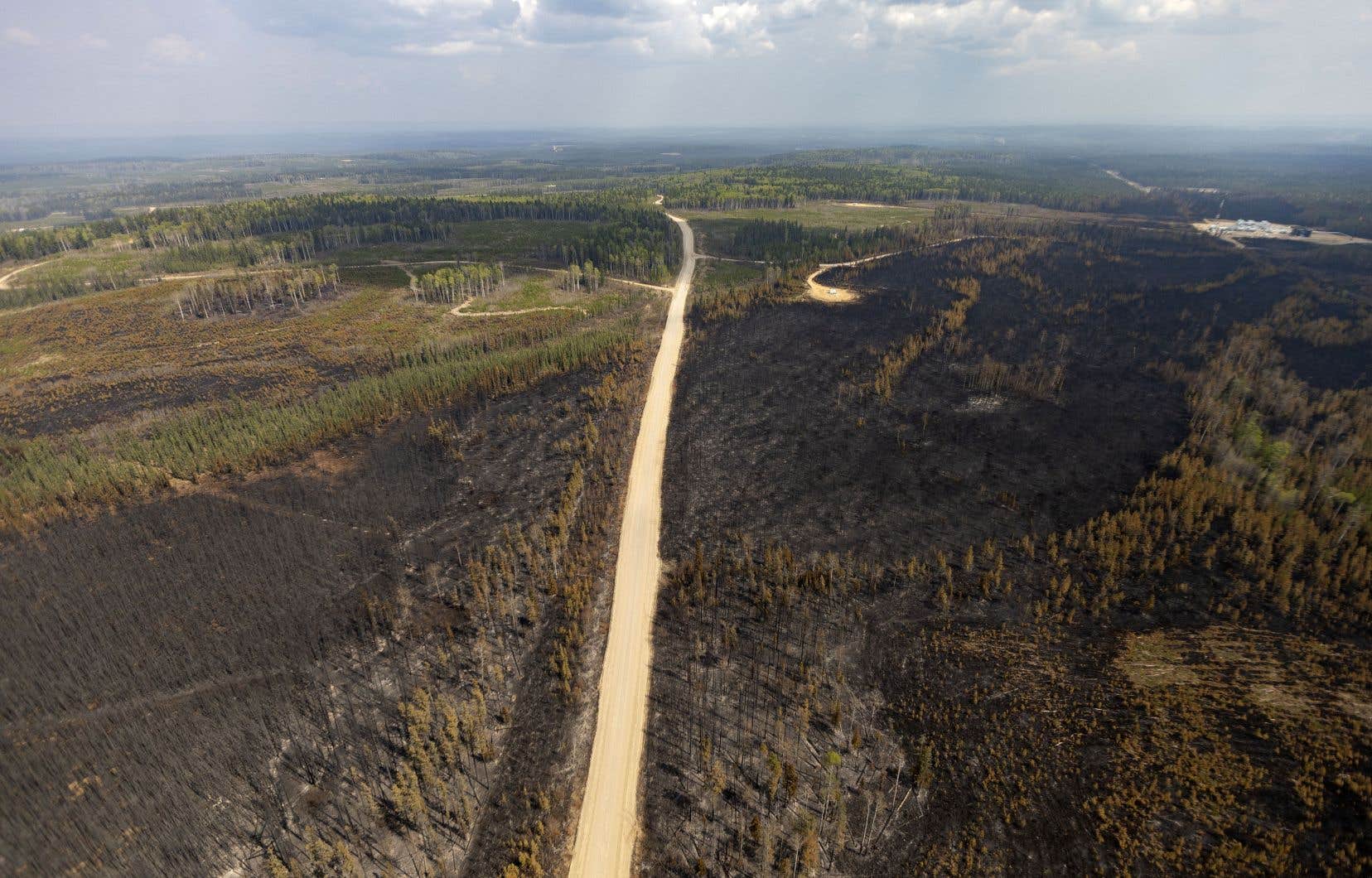Even though the number of people evacuated to flee wildfires in Alberta plummeted on Wednesday, thousands of people are staying out of their homes as firefighters brace for hotter, drier conditions in the coming days.
Colin Blair, director of the Alberta Emergency Management Agency, calculated that the number of people away from home had fallen to less than 18,000, down from 6,000.
“Alberta continues to be under a provincial state of emergency,” he said Wednesday.
Wildfire danger also forced the evacuation of part of a First Nation southwest of Edmonton.
Corrine Bell of the O’Chiese First Nation Emergency Response Team said 103 people were forced from the northern area of the reserve. One house was lost and several others were damaged by smoke.
“We are taking advantage of the time gap to take care of hot spots,” said M.me Bell, adding that the community hopes the wind will not change direction.
Six neighboring First Nations also offered their fire departments to help.
Chief Conroy Sewepagaham, chief of Little Red River First Nation in northern Alberta, says the community of Fox Lake has now lost 85 homes.
Without a road leading to the community, around 3,700 people had to leave by barge and boat.
In Brazeau County, west of Edmonton, Gary Edwards said he returned home shortly as the area was evacuated to help prevent the fire from spreading to nearby properties.
“I’m extremely lucky with the community I have around me because they saved my house and my barn and we saved several other houses and farms here,” Mr Edwards said.
He added that he had a team with a few water trucks, pressure trucks and a homemade fire truck.
Zach Dressler, a septic tank cleaner in Drayton Valley, was also trying to help. Parked outside the Brazeau County office just north of Drayton Valley, the man waited in his tanker truck to obtain an entry permit into the town which was evacuated Thursday evening.
“I’m crying…my mental health is deteriorating very quickly because I can’t find anyone to help me,” he blurted out.
“We all have fireproof clothing. I have fireproof boots – we do that every day and we’re told, no, we can’t help, Mr Dressler continued. We are not firefighters, but we are professionals. »
He said the RCMP had threatened to arrest and fine those who do not comply with evacuation orders.
RCMP spokesman Fraser Logan, however, confirmed on Wednesday that no arrests had been made.
Hamlets evacuated
Karen Prevost of Drayton Valley said she had experienced fire evacuations in previous years.
“I’m alive and my family is safe,” she said. It’s all that matters. »
Mme Prevost is currently in Tomahawk, a hamlet about 35 kilometers northeast of Drayton Valley.
“I’m in no rush to get home because grocery stores need time to clean out their freezers and stuff because the power is out,” she continued. People have to be patient. »
Earlier Wednesday, an evacuation order was lifted for the hamlet of Evansburg, Alta., about 120 kilometers west of Edmonton, after residents were told to leave late last month, as dry and windy conditions have fueled forest fires that put the hamlet and surrounding rural area at risk.
Blair said Alberta remains under a state of emergency with 20 communities calling local states of emergency. Four band councils have passed similar resolutions and 13 evacuation notices are in place.
Alberta Wildfire’s Christie Tucker said firefighters were battling 76 active wildfires Wednesday afternoon, 24 of which were out of control. She said activity is expected to increase as temperatures rise and humidity drops later in the week.
“Firefighters have been working hard to prepare for more difficult conditions, building firebreaks around communities and bringing in new firefighters,” she reported.
Firefighters from the Yukon, British Columbia, Ontario, Manitoba and Quebec arrived in Alberta to help. The government said Tuesday that crews were also expected from New Brunswick, Oregon and Alaska.
